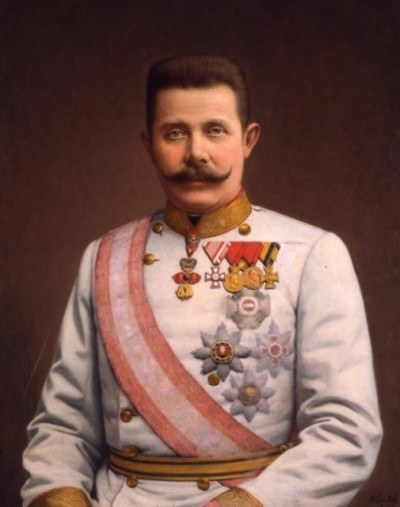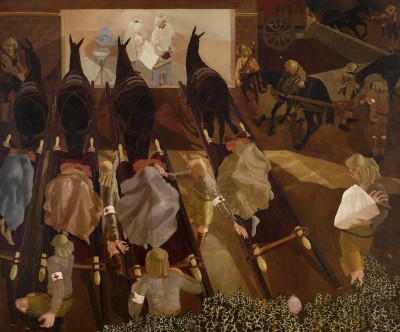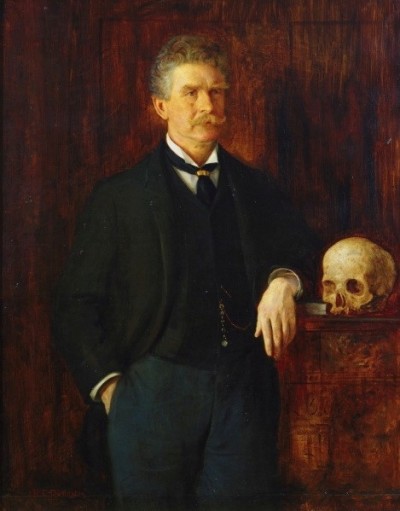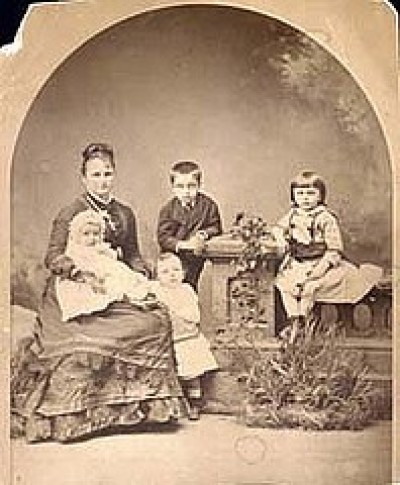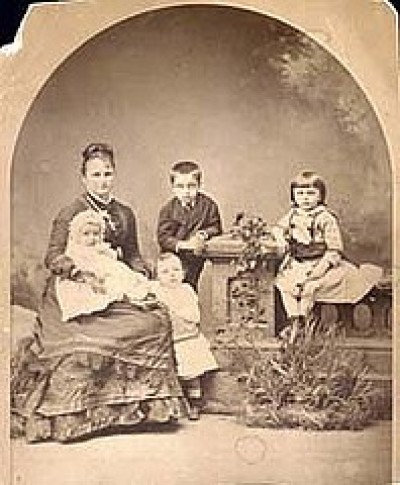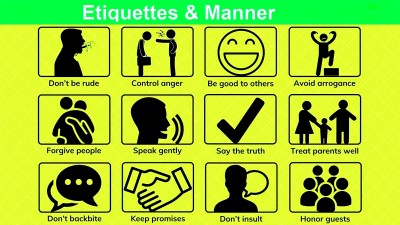Course description
The Shameful History of Buying and Selling Human Beings
 Harriet Beecher Stowe published her novel ‘Uncle Tom’s Cabin’ in 1852, nine years before the American Civil War erupted over the rights of the white-skinned population in the southern states to buy and sell slaves. Beecher Stowe records in painful detail the misery Tom felt when he was sold separately from his wife and little children and how he escaped, bringing him to the attention of the law. The book was an immediate bestseller and helped to change public opinion in the northern states and across the world about the evils of slavery.
Harriet Beecher Stowe published her novel ‘Uncle Tom’s Cabin’ in 1852, nine years before the American Civil War erupted over the rights of the white-skinned population in the southern states to buy and sell slaves. Beecher Stowe records in painful detail the misery Tom felt when he was sold separately from his wife and little children and how he escaped, bringing him to the attention of the law. The book was an immediate bestseller and helped to change public opinion in the northern states and across the world about the evils of slavery.
But it is a misconception to consider slavery as an American phenomenon. There is proof that slaves existed before recorded history began at least five thousand years ago. Very few societies escaped it after people began living in settlements. (Hunter-gatherer communities did not use slaves because they lived from hand to mouth, eating what they hunted and picked from trees. There was often nothing extra to feed a slave on!)
 As much as half the population of Athens – ironically, the birthplace of democracy – and a fifth of the people of Rome two thousand years ago were slaves. Nobody saw anything unusual or immoral about owning another person. Aristotle, for instance, a philosopher we greatly admire even today, thought that all non-Greeks were fit only to obey orders and, so, for slavery!
As much as half the population of Athens – ironically, the birthplace of democracy – and a fifth of the people of Rome two thousand years ago were slaves. Nobody saw anything unusual or immoral about owning another person. Aristotle, for instance, a philosopher we greatly admire even today, thought that all non-Greeks were fit only to obey orders and, so, for slavery!
In Rome, the average life expectancy of a male slave was just over seventeen years of age, by the way, and a only a few months longer for girls. These terrible statistics caused three civil wars in the Roman Empire, started by slaves fighting for their freedom, the most famous being the Third Servile War, led by Spartacus, in 73 B.C. (It’s the subject of a 1960s Hollywood blockbuster film, by the way.) The story goes like this. Spartacus was forced to be a gladiator but did not want to kill the men he ate and talked with for the entertainment of the Roman crowds. With about seventy others, he escaped from the gladiator ‘school’, where he lived.
 This small group easily defeated the band of Roman soldiers sent to capture them. Only a few months later, there were 120,000 slaves – men, women and children – who were part of the revolt and wandered around Italy, killing landowners and raiding their properties. Even regular Roman armies seemed powerless to stop them until a general crushed the rebellion in an all-out battle in 71 B.C. Six thousand survivors were crucified along the main road leading to Rome as a punishment and a warning to others. All they had wanted was to leave Italy and start new lives in Africa as free people.
This small group easily defeated the band of Roman soldiers sent to capture them. Only a few months later, there were 120,000 slaves – men, women and children – who were part of the revolt and wandered around Italy, killing landowners and raiding their properties. Even regular Roman armies seemed powerless to stop them until a general crushed the rebellion in an all-out battle in 71 B.C. Six thousand survivors were crucified along the main road leading to Rome as a punishment and a warning to others. All they had wanted was to leave Italy and start new lives in Africa as free people.
We often associate slavery with American and European kidnapping of Africans to work in the fields. Yet, historians tell us that slavery existed in Africa long before European and American ships started to capture the population to enslave it. In fact, African slavery happened so easily because slaving networks were in place before they ever arrived and African chiefs participated in the trade, making huge sums of money along the way. The same is true of Japan, Korea, India – especially Bengal – all across Latin America, Russia and just about everywhere else.
 Even in the twentieth century, Hitler’s Nazis used slave labour to support German industries, like I. B. Farben and Volkswagen. These men were prisoners of war but forced to work twelve or more hours a day doing heavy manual labour and given only 700 calories of food. When they died after a few weeks or, at most, months, the Nazis simply replaced them with others. Yet, it was always Hitler’s idea to employ a slave class of sub-humans to do the dirty work of his thousand-year empire, even after the war had finished.
Even in the twentieth century, Hitler’s Nazis used slave labour to support German industries, like I. B. Farben and Volkswagen. These men were prisoners of war but forced to work twelve or more hours a day doing heavy manual labour and given only 700 calories of food. When they died after a few weeks or, at most, months, the Nazis simply replaced them with others. Yet, it was always Hitler’s idea to employ a slave class of sub-humans to do the dirty work of his thousand-year empire, even after the war had finished.
 Slavery still exists today, of course, even though the last country to abolish it, Mauritania, ended the trade in 1981. In India and Bangladesh, children often work without salaries because their parents have ‘sold’ them as domestic helpers. Other people are kidnapped or tricked into working as sex slaves all over the world, even in the most developed countries. Estimates put the number of slaves today at around 25 million.
Slavery still exists today, of course, even though the last country to abolish it, Mauritania, ended the trade in 1981. In India and Bangladesh, children often work without salaries because their parents have ‘sold’ them as domestic helpers. Other people are kidnapped or tricked into working as sex slaves all over the world, even in the most developed countries. Estimates put the number of slaves today at around 25 million.
In this lecture, we will look at the African slave trade and the lives of the unlucky people captured.
Britain played a major role in bringing international slavery to an end. To be sure, it was not the first country to abolish slavery: Lithuania in eastern Europe did that as early as 1588. Many other countries introduced partial bans on slavery, such as forbidding the enslavement of Native Americans (Spain in 1530; and Portugal in 1570), selling slaves to Muslims (introduced by Russia in 1649), and so on, but these laws did not state that owning other people, like one can own a table or a dog, was morally wrong. Besides, the rules often applied only to specific races. Sometimes, a law that stopped people owning slaves of certain races simply led to greater profits enslaving others, as with the Spanish and Portuguese laws about not making Native Americans slaves, mentioned above. The slave traders just turned their attention to capturing Africans instead.
The British slave trade had started with Sir Francis Drake, an English hero because he was the naval commander who successfully defended his country in 1588 against the Spanish armada, although greatly outnumbered. British school children hear a lot in their history lessons about Drake’s calm and bravery in facing this frightening enemy, but do not learn about the man starting the slave trade, of course. Selective history!
 For two and a half centuries, the British shipped slaves from Africa to the Caribbean and to their colony, America, so that they could work in temperatures under the hot sun that were thought impossible for a white man. Sadly, historians have estimated that for every slave that was sold in a market in America, five, six or even ten were killed in the raids on villages to kidnap them, or died en route due to disease or punishment. Slaves were often chained for the whole three-week voyage and so were lying in their own waste. They were also crowded together so closely that if one fell ill, many others soon caught the infection too. Added to that, the food they were given was often rotten by the end of the journey, making a bad situation even worse. The dead were simply thrown over the side of the ship when their corpses were discovered in the morning, without any prayer or friend to say goodbye. But, prices for slaves were very, very high and there were excellent profits to be made, even given the high mortality rate.
For two and a half centuries, the British shipped slaves from Africa to the Caribbean and to their colony, America, so that they could work in temperatures under the hot sun that were thought impossible for a white man. Sadly, historians have estimated that for every slave that was sold in a market in America, five, six or even ten were killed in the raids on villages to kidnap them, or died en route due to disease or punishment. Slaves were often chained for the whole three-week voyage and so were lying in their own waste. They were also crowded together so closely that if one fell ill, many others soon caught the infection too. Added to that, the food they were given was often rotten by the end of the journey, making a bad situation even worse. The dead were simply thrown over the side of the ship when their corpses were discovered in the morning, without any prayer or friend to say goodbye. But, prices for slaves were very, very high and there were excellent profits to be made, even given the high mortality rate.
 Even when they were bought by a slave owner in America, there was often continuous punishment. One observer remarked that three out of every four slaves he had ever met had scars from the whip on their backs. The women and teenage girls were, of course, often raped, by their owner or his sons, even if they were married to another slave and had children of their own. It made no difference. And if one died while he was being punished, it was easy for a white owner to cover it up or claim that he had been shot while he was trying to escape. Who would a white judge believe? A neighbor of his, another white man, or an illiterate black?
Even when they were bought by a slave owner in America, there was often continuous punishment. One observer remarked that three out of every four slaves he had ever met had scars from the whip on their backs. The women and teenage girls were, of course, often raped, by their owner or his sons, even if they were married to another slave and had children of their own. It made no difference. And if one died while he was being punished, it was easy for a white owner to cover it up or claim that he had been shot while he was trying to escape. Who would a white judge believe? A neighbor of his, another white man, or an illiterate black?
In England, in 1772, though, British supporters of a slave, called Somorset, went to court when his master decided to sell him abroad. The judge, Lord Mansfield, in an historic decision, ruled that there was no Act of Parliament which legalized the buying and selling of people, as if they were animals or objects. As such, he argued, there could be no slavery in Britain. He finished by saying, “Let the black go! He’s free.” That put an end to slavery in Britain. However, Lord Mansfield did not include British colonies or other nations in his judgment.
 The Somerset decision meant there were many freed African slaves in Britain. Olaudah Equiano, a slave who had bought his freedom before heading to the UK, became a leading member of the Sons of Africa. This was an abolitionist movement, whose members regularly wrote to the newspapers about the horrors of slavery as well as meeting such VIPs as the Prince of Wales and famous artists and writers to discuss their views. Equiano’s 1789 autobiography, ‘The Interesting Narrative of the Life of Olaudah Equiano’, about his experiences as a slave influenced Parliament and led to the passing of The Slave Trade Act of 1807, which forbade the sale of slaves anywhere in the British Empire…. But not the purchase or ownership of slaves. This was a huge achievement, as between 1791 and 1807 – a period of just sixteen years – 666,000 slaves were captured and transported out of Africa on British ships. Clearly, many people were making fortunes from the trade. The Navy could fine ships’ captains 100 pounds sterling for every slave found on board after 1807. Sadly, this meant that the slave ships would throw slaves into the sea to drown when they saw Navy ships in the distance. But, between 1807 and 1860, Navy ships freed 150,000 slaves anyway.
The Somerset decision meant there were many freed African slaves in Britain. Olaudah Equiano, a slave who had bought his freedom before heading to the UK, became a leading member of the Sons of Africa. This was an abolitionist movement, whose members regularly wrote to the newspapers about the horrors of slavery as well as meeting such VIPs as the Prince of Wales and famous artists and writers to discuss their views. Equiano’s 1789 autobiography, ‘The Interesting Narrative of the Life of Olaudah Equiano’, about his experiences as a slave influenced Parliament and led to the passing of The Slave Trade Act of 1807, which forbade the sale of slaves anywhere in the British Empire…. But not the purchase or ownership of slaves. This was a huge achievement, as between 1791 and 1807 – a period of just sixteen years – 666,000 slaves were captured and transported out of Africa on British ships. Clearly, many people were making fortunes from the trade. The Navy could fine ships’ captains 100 pounds sterling for every slave found on board after 1807. Sadly, this meant that the slave ships would throw slaves into the sea to drown when they saw Navy ships in the distance. But, between 1807 and 1860, Navy ships freed 150,000 slaves anyway.
The 1807 Act also allowed the government to force African kings and chiefs to stop supplying slaves. Some, such as the King of Lagos in Nigeria, were deposed when they continued to do so.
 Yet, the trade went on – illegally – because of the enormous sums of money ship owners could make and there was still a market for slaves in many parts of the world, such as the southern states of America. And, of course, buying and owning slaves remained legal. Only selling them was a crime. The 1833 Slavery Abolition Act changed that. It also meant that Britain actively put pressure on other nations to stop slaving. For instance, in the American Civil War, the British Navy blockaded the ports of the southern states to stop them receiving arms, food and other essential items, in an effort to force them to give up their slaves.
Yet, the trade went on – illegally – because of the enormous sums of money ship owners could make and there was still a market for slaves in many parts of the world, such as the southern states of America. And, of course, buying and owning slaves remained legal. Only selling them was a crime. The 1833 Slavery Abolition Act changed that. It also meant that Britain actively put pressure on other nations to stop slaving. For instance, in the American Civil War, the British Navy blockaded the ports of the southern states to stop them receiving arms, food and other essential items, in an effort to force them to give up their slaves.
In the United States, even before the Civil War of 1861 to 1865, there was an illegal ‘Underground Railroad’ which allowed escaped slaves to move from southern states, where slavery was legal, to northern ones where it was forbidden. It was not actually a railway but a group of people, some Afro-American, some white – who helped escaped slaves get to free states in the north, Canada and Mexico by road, boat, or any other means. Of course, any slaves or even white people helping them to get away were punished if they were caught.
The law demanded that officials and the public in free states must help slave catchers recover escapees but this was often ignored even by state government officials. Anger in the slave-holding southern states about this was one of the main reasons for the Civil War. But slave catchers did not always act legally. They often caught free Afro-Americans, even if they had documents to prove they were not slaves. In fact, there were many examples of slave catchers burning these papers. Also, judges received $5 for each case where Afro-Americans could prove they were not slaves, but $10 if they sent them back to southern states and into slavery. Not all judges were honest, of course.
The first slave escape route was, in fact, to Florida, which was a Spanish colony, where slavery was illegal. However, in 1821, Spain sold the territory to the USA, which wanted to buy it precisely to stop slaves escaping there.
 By 1850, it is estimated that 100,000 slaves escaped from southern states using the Underground Railroad. Harriet Tubman made thirteen trips to the south and helped seventy slaves run away and Levi Coffin, a white abolitionist, hid as many as 2,000 in his home while they were en route to freedom. Nowadays, they are considered heroes but in the mid-19th century, they were breaking the law.
By 1850, it is estimated that 100,000 slaves escaped from southern states using the Underground Railroad. Harriet Tubman made thirteen trips to the south and helped seventy slaves run away and Levi Coffin, a white abolitionist, hid as many as 2,000 in his home while they were en route to freedom. Nowadays, they are considered heroes but in the mid-19th century, they were breaking the law.
Although the figure of 5,000 escapes a year may seem high, it was, in fact, insignificant if we compare it to the numbers of slaves working in the southern states. Psychologically, however, it was a powerful argument against slavery.
Of course, after the Union won the Civil War in 1865, slavery became illegal anywhere in the country but that does not mean there was equality. The Ku Klux Klan, a murdering political movement which was anti-black, anti-Jewish and anti-Catholic, often stopped blacks from voting in the 1960s. There were still public hangings without trial of black boys who ‘looked at’ white women throughout the first half of the 20th century. And even today, racism is alive and well in the US, much of Europe and here in Bangladesh!
If you want to watch some videos on this topic, you can click on the links to YouTube videos below.
If you want to answer questions on this article to test how much you understand, you can click on the green box: Finished Reading?
Videos :
1. Slavery (6:20)
2. The Atlantic Slave Trade (5:39)
3. Why did Britain Abolish Slavery? (3:14)
4. Life Aboard a Slave Ship (4:15)
5. The Breathtaking Courage of Harriet Tubman (4:49)
6. What it was Like to be a Roman Slave (10:54)
7. Slavery - Ancient Greek Society (8:36)
8. Why did Europeans Enslave Africans? (9:18)
9. Nazi Regime Slavery (3:38)
10. Britain's Legacy of Slavery (6:08)
11. Sex Slavery (6:37)
12. The Slave Narrative of Olaudah Equiano (7:24)
13. Modern Slavery (7:06)

 Harriet Beecher Stowe published her novel ‘Uncle Tom’s Cabin’ in 1852, nine years before the American Civil War
Harriet Beecher Stowe published her novel ‘Uncle Tom’s Cabin’ in 1852, nine years before the American Civil War  As much as half the population of Athens –
As much as half the population of Athens –  This small group easily
This small group easily  Even in the twentieth century, Hitler’s Nazis used slave
Even in the twentieth century, Hitler’s Nazis used slave Slavery still exists today, of course, even though the last country to
Slavery still exists today, of course, even though the last country to  For two and a half centuries, the British shipped slaves from Africa to the Caribbean and to their colony, America, so that they could work in temperatures under the hot sun that were thought impossible for a white man. Sadly, historians have estimated that for every slave that was sold in a market in America, five, six or even ten were killed in the raids on villages to kidnap them, or died
For two and a half centuries, the British shipped slaves from Africa to the Caribbean and to their colony, America, so that they could work in temperatures under the hot sun that were thought impossible for a white man. Sadly, historians have estimated that for every slave that was sold in a market in America, five, six or even ten were killed in the raids on villages to kidnap them, or died  Even when they were bought by a slave owner in America, there was often continuous punishment. One observer remarked that three out of every four slaves he had ever met had
Even when they were bought by a slave owner in America, there was often continuous punishment. One observer remarked that three out of every four slaves he had ever met had The Somerset decision meant there were many freed African slaves in Britain. Olaudah Equiano, a slave who had bought his freedom before heading to the UK, became a leading member of the Sons of Africa. This was an
The Somerset decision meant there were many freed African slaves in Britain. Olaudah Equiano, a slave who had bought his freedom before heading to the UK, became a leading member of the Sons of Africa. This was an  Yet, the trade went on – illegally – because of the enormous sums of money ship owners could make and there was still a market for slaves in many parts of the world, such as the southern states of America. And, of course, buying and owning slaves remained legal. Only selling them was a crime. The 1833 Slavery Abolition Act changed that. It also meant that Britain actively
Yet, the trade went on – illegally – because of the enormous sums of money ship owners could make and there was still a market for slaves in many parts of the world, such as the southern states of America. And, of course, buying and owning slaves remained legal. Only selling them was a crime. The 1833 Slavery Abolition Act changed that. It also meant that Britain actively  By 1850, it is estimated that 100,000 slaves escaped from southern states using the Underground Railroad. Harriet Tubman made thirteen trips to the south and helped seventy slaves run away and Levi Coffin, a white
By 1850, it is estimated that 100,000 slaves escaped from southern states using the Underground Railroad. Harriet Tubman made thirteen trips to the south and helped seventy slaves run away and Levi Coffin, a white 





